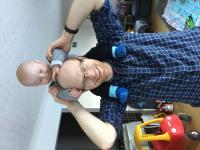Article,
Who is bilingual? Snapshots across the lifespan
Bilingualism: Language and Cognition, 23 (5): 929--937 (November 2020)
Abstract
Building on our earlier analysis of the factorial structure of
bilingualism for young adults obtained from the Language and
Social Background Questionnaire (LSBQ; Anderson, Mak, Keyvani
Chahi & Bialystok, 2018), we analyzed responses from 675
children and 125 older adults to a similar questionnaire. Three
factors accounting for 74\% of the variance emerged in the
analysis of children's responses: Adult Language in the Home,
Non-English use for Media, Non-English use with Siblings. There
were also three factors that explained the responses of older
adults that accounted for 79\% of the variance: Non-English Use,
Non-English Proficiency, and English Proficiency. Therefore,
bilingual experience is captured by different factors at
different points in the lifespan. These results are discussed in
conjunction with the earlier results from young adults and the
implications for understanding bilingualism across the lifespan.
